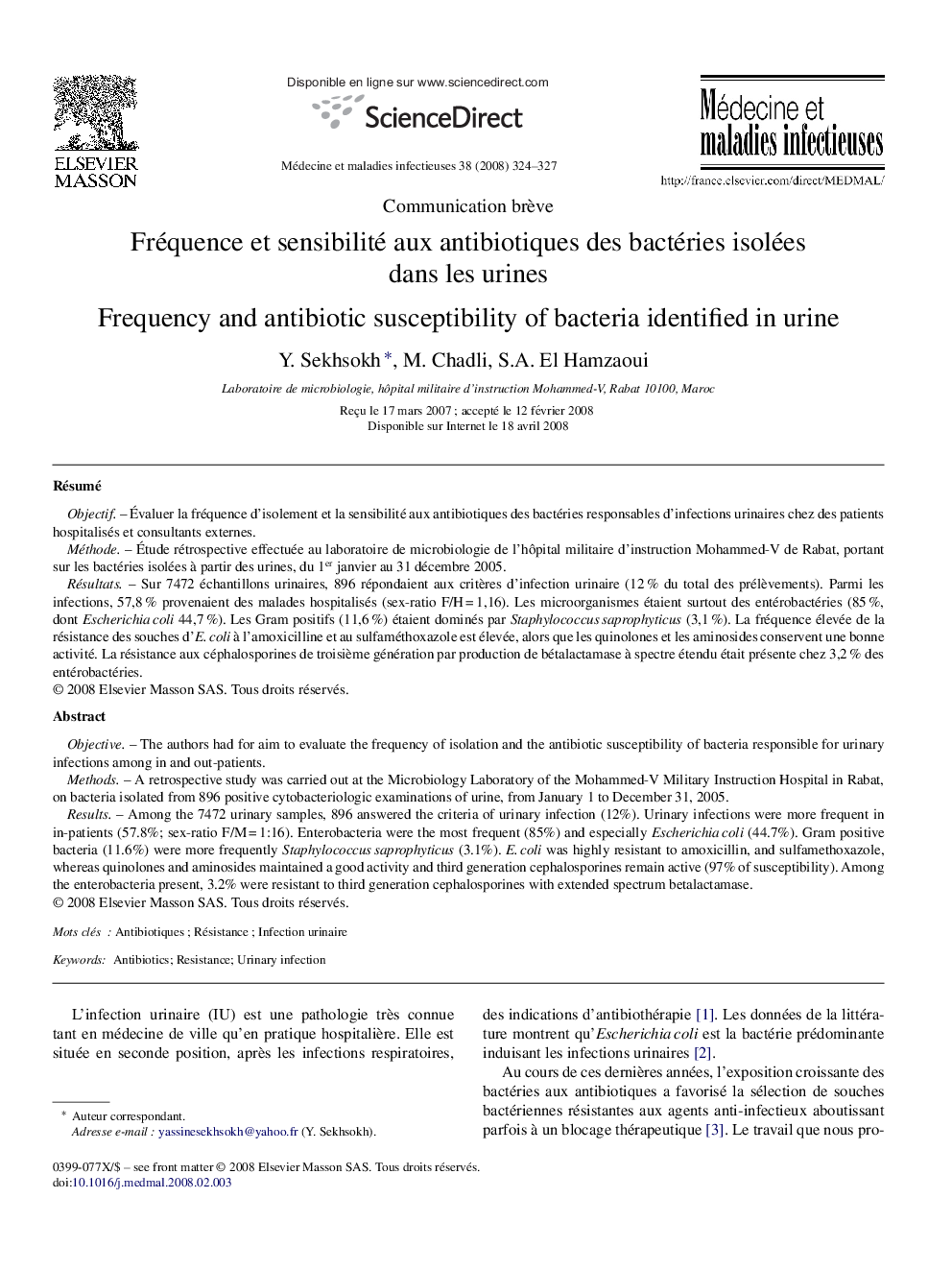| Article ID | Journal | Published Year | Pages | File Type |
|---|---|---|---|---|
| 3413992 | Médecine et Maladies Infectieuses | 2008 | 4 Pages |
RésuméObjectifÉvaluer la fréquence d’isolement et la sensibilité aux antibiotiques des bactéries responsables d’infections urinaires chez des patients hospitalisés et consultants externes.MéthodeÉtude rétrospective effectuée au laboratoire de microbiologie de l’hôpital militaire d’instruction Mohammed-V de Rabat, portant sur les bactéries isolées à partir des urines, du 1er janvier au 31 décembre 2005.RésultatsSur 7472 échantillons urinaires, 896 répondaient aux critères d’infection urinaire (12 % du total des prélèvements). Parmi les infections, 57,8 % provenaient des malades hospitalisés (sex-ratio F/H = 1,16). Les microorganismes étaient surtout des entérobactéries (85 %, dont Escherichia coli 44,7 %). Les Gram positifs (11,6 %) étaient dominés par Staphylococcus saprophyticus (3,1 %). La fréquence élevée de la résistance des souches d’E. coli à l’amoxicilline et au sulfaméthoxazole est élevée, alors que les quinolones et les aminosides conservent une bonne activité. La résistance aux céphalosporines de troisième génération par production de bétalactamase à spectre étendu était présente chez 3,2 % des entérobactéries.
ObjectiveThe authors had for aim to evaluate the frequency of isolation and the antibiotic susceptibility of bacteria responsible for urinary infections among in and out-patients.MethodsA retrospective study was carried out at the Microbiology Laboratory of the Mohammed-V Military Instruction Hospital in Rabat, on bacteria isolated from 896 positive cytobacteriologic examinations of urine, from January 1 to December 31, 2005.ResultsAmong the 7472 urinary samples, 896 answered the criteria of urinary infection (12%). Urinary infections were more frequent in in-patients (57.8%; sex-ratio F/M = 1:16). Enterobacteria were the most frequent (85%) and especially Escherichia coli (44.7%). Gram positive bacteria (11.6%) were more frequently Staphylococcus saprophyticus (3.1%). E. coli was highly resistant to amoxicillin, and sulfamethoxazole, whereas quinolones and aminosides maintained a good activity and third generation cephalosporines remain active (97% of susceptibility). Among the enterobacteria present, 3.2% were resistant to third generation cephalosporines with extended spectrum betalactamase.
